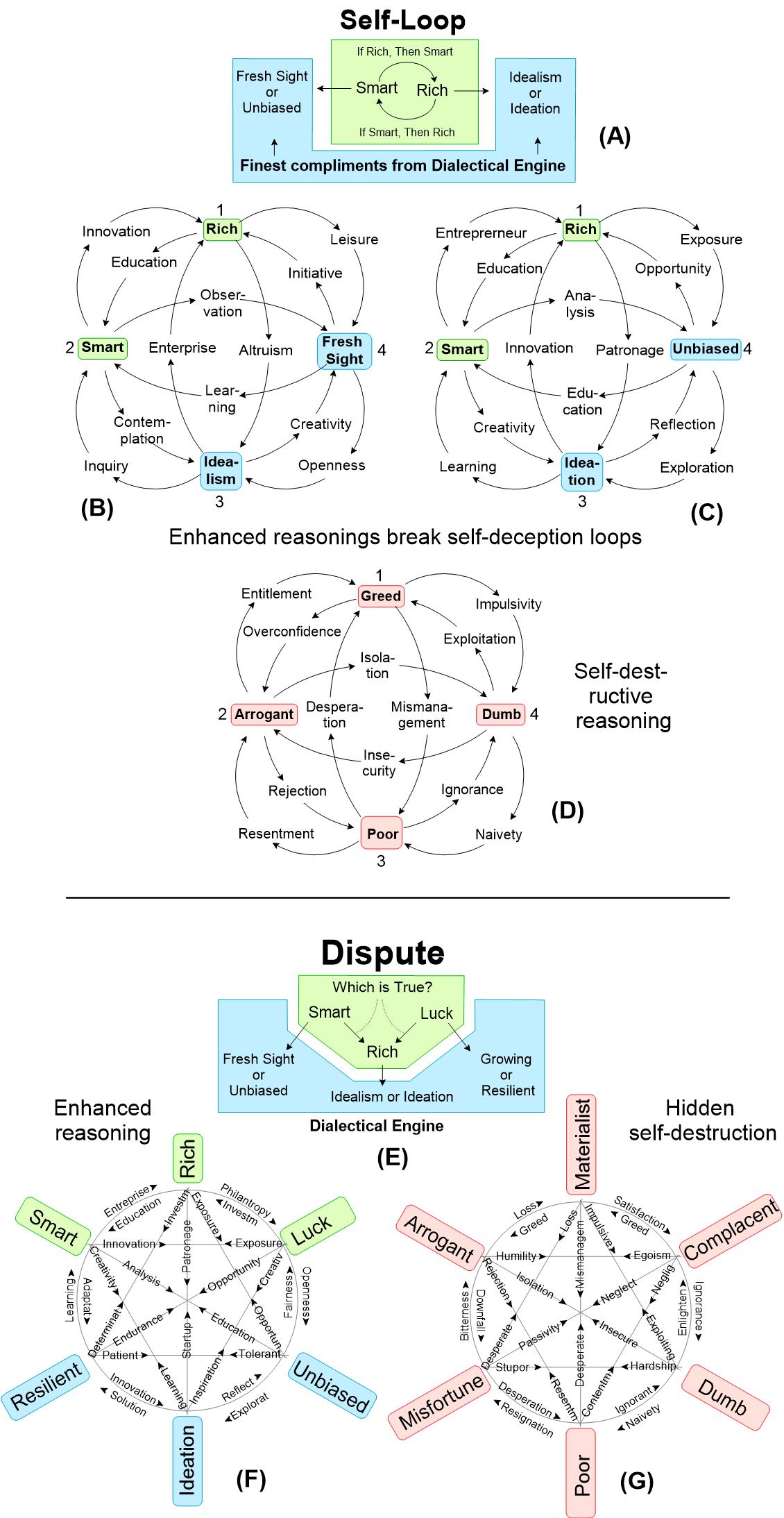Enhance your reasoning with the finest complementarities using our dialectical engine, transforming disputes and “self-loops” into opportunities.

In the diagrams, the blue highlights showcase the best arguments that counterbalance the original concepts, which are illustrated in green.
Scheme A poses a foundational “2-concept” question: which comes first, being smart or being rich? Schemes B and C deepen this inquiry by introducing complementary concepts – Idealism and a ‘Fresh Sight’ in B, and Ideation and Unbiased perspective in C, demonstrating that the original concepts are incomplete.
Similarly, Scheme E poses a “3-concept” question, probing the primary factor in becoming rich: is it being smart or lucky? Scheme F expands upon this, illustrating a dynamic interplay of six factors, where the original three are augmented with three ‘finest complementarities.’
These arguments foster a kind of ‘self-control,’ naturally connecting with each other to unveil not-so-obvious yet vital connections for informed decision-making (see ‘When Reasoning Yields Fallacy?‘).
Schemes D and G illustrate the “self-deception traps” that emerge when certain connections in Schemes B, C, or F become ‘deregulated’. Even a small falsity can subtly deteriorate the entire system, turning a ‘good cause’ into a major problem. To see this in action, consider how a disrupted Education in Schemes B and C can foster Mismanagement and Desperation in Scheme D. (Note that all concepts in D and G are ‘overdevelopments’ of B, C, and F.)
To optimize outcomes, complement this Polycircular approach with an assessment of the likelihood of success for various pairings, as demonstrated in our ‘Analysis of Pros and Cons‘
Similar Case Studies:
See Also:
Dialectics for Decision Making
When Reasoning Yields Fallacy?
Dialectic Resources (section on Synchronicity)

